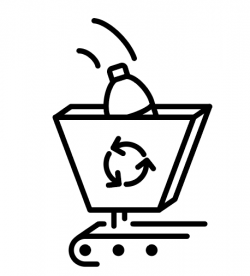Value Propositions: One Acre Fund is delivering education on modern techniques to farmers in remote areas of Sub-Suharan Africa on how to better and more efficiently grow their crops. They are pursuing this teaching because farmers in this region are often going hungry because they do not have access to this information. They are also selling a better life for these farmers and their communities since their children and families will not go hungry and they will put their money back into the community. These farmers will invest in education, local business, and will help neighbors in need. In addition, sustainable farming practices promise a better crop yield for future generations as well.
Key Activities: One Acre Fund is based on a bundle of services. They offer seeds, fertilizer and loans to rural farmers, and deliver these to areas in a walkable distance to any farmer. They give in depth training throughout the growing season on current agricultural techniques, and offer crop storage solutions. They also teach about agricultural market fluctuations so that farmers can maximize profits.This can happen because they place an emphasis on maximizing their “Total Impact.” They allocate funds to programs that have the highest impact, which they determine by multiplying the number of farmers by the impact per farmer. For most programs, they measure this by $USD per farmer, which is easily comparable across programs and is a valuable unit to farmers who are taking out loans. They have this information through intensive research and development, and are beginning to look at other metrics such as hunger and school attainment. One Acre Fund invests heavily in data quality by physically weighing crops, meticulously checking data integrity, and complete intensive harvest surveys. Their product development team is continuing to create and experiment with new products, and complete at least 40 studies every year. To maintain consistency in their programming across with wide range of geography their foundation covers, they tailor their programming to suit local context by collecting weekly key performance indicators (KPIs) to spot areas that are succeeding versus need assistance, and to identify areas where program learning is going especially well. They run customer service lines as well to provide farmers with a way to share their complaints, compliments and ideas with their staff.
Key Resources: Some of the key resources that One Acre Fund utilizes in their operations are the hundreds of trucks and drivers to deliver seeds and fertilizers to points within walking distance of their rural clients, the warehouses that store seed and fertilizer, their employees, and research ventures. One of these studies is the Kenya Income and Expenditure Study. In this study they tracked income and expenditure of 400 farmers over the course of a year. This study is helping the Fund understand how their clients manage their money and is helping them gain insights on how to better serve their clients and their clients’ communities.
Distribution Channel: One Acre Fund uses a mixture of both virtual and physical channels. This way they are able to serve not only customers in their local communities, but a wider reaching audience. The services they provide to their farmers keep local customers loyal, and seeing their success and through recommendation causes neighbors or people in close communities to try their services.They use their trucks to deliver products to rural farmers. They also have a website where anyone in the world can partner with their organization to donate to their fund.
Revenue Streams: One Acre Fund is able to operate based on a revenue-generating model. Their field expenses are covered through farmer loan repayment (75%) and donations (25%).
Customer Segments: Farmers in Burundi, Kenya, Malawi, Rwanda, Tanzania, and Uganda.
Customer Relationships: This non-profit is able to maintain a good customer base by focusing on impact and outreach. When farmers see consistently improving harvests for One Ace Funds’ clients, the farmers will want to apply the same program to improve their yields as well. Once the Fund is fully established in a community, their influence is spread by satisfied customers recommending their services to their neighbors.
Key Partners: Internally, One Acre Fund has 17 general partners that are division and country directors from across the organization. They align around broad strategic goals, high level visions for the organization, and major organizational drives. They earn this distinction by significant contributions to the organization. They have country directors, who guide strategy for country-level operations. Their external partners are connected to a wide variety of businesses, non-profits, and charitable trust management. It includes Bridgespans Philanthropy Practice, Ezrah Charitable Trust and Simcah Management, Kickstart International, Marshall & McLennan Companies, Population Services International, MFK Group Rwanda, Volkswagen Group South Africa, Zoetis Inc, United Nations, Trademark East Africa, and Marquette Associates. Each of these companies have individuals set in an advisory role to help One Acre Fund both internally and to provide resources externally, and can offer guidance from a wide array of experience.
Cost Structure: In order to be able to function smoothly, One Acre Fund does incur some costs. These include paying the salaries of their employees (drivers, warehouse managers, country directors, operations analysts, etc), paying to rent and maintain warehouses that store the seed and fertilizers, paying for gas and maintenance for the trucks, and paying the initial loans that allow their clients to access seed and fertilizer. They also are able to improve their function by funding research that helps them gain insight into their clients finances.
Sources:
One Acre Fund – Income and Expenditure Study
https://www.thelifeyoucansave.org/where-to-donate/one-acre-fund
https://www.guidestar.org/profile/20-3668110
https://www.guidestar.org/profile/20-3668110
https://www.emersoncollective.com/articles/2016/04/5-questions-with-one-acre-fund/
